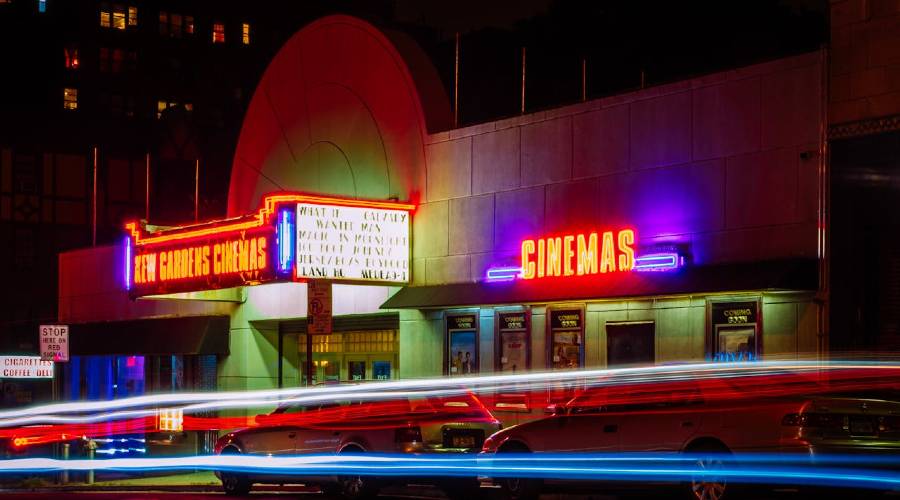Screenplay Structure
On this page, you'll find an introduction to screenplay structure. If you need help formatting your screenplay, check out our list of free software options.
A full-length screenplay is about 100-120 pages (1 page = about 1 minute of screen time). It contains about 50-70 scenes that show the story.
In a 1990 New York Times interview, film maker David Lynch talked about regular visits to Bob's Big Boy, where he would drink chocolate shakes and coffee with lots of sugar, and then on his sugar high, he would write his movie ideas on paper napkins. In the same interview, David Lynch recommended the use of index cards as a screenwriting tool, a technique he learned when he studied with the Czech film maker Frank Daniel. "If you want to make a feature film, you get ideas for 70 scenes. Put them on 3-by-5 cards," Lynch explained. "As soon as you have 70, you have a feature film."
Let's talk more about what to put on those cards (or napkins), and how to organize them into a well-structured screenplay.
Three-Act Structure
Screenplays are often described as having three acts, or parts -- basically, a beginning, a middle, and an end.

Act 1
Act 1 is about 30 pages and introduces the story. The audience gets oriented and gets to know the hero, and then something happens ("the inciting incident") which pushes the hero out of their comfort zone and sets the story in motion.
Some examples of inciting incidents:
- From The Wizard of Oz: A tornado drops Dorothy in the magical land of Oz.
- From Harry Potter and the Sorcerer's Stone: Harry is told that he's a wizard and that his parents were killed by the dark wizard Voldemort.
- From Jaws: The first victim is killed by the shark.
- From Rear Window: Jeff hears a scream in the night, then observes his neighbor carrying something out of the apartment.
- From Pride and Prejudice: Elizabeth Bennet is snubbed by Mr. Darcy at a ball.
The inciting incident normally happens about 10-15 pages (10-15 minutes) into the screenplay and sets the ball rolling for the story's main conflict.
Act 2
Act 2 is about 60 pages. This is the main part of the story. It develops the story conflict, as the hero struggles to overcome obstacles in order to solve a problem or reach a goal.
Examples of story conflicts:
- from The Wizard of Oz: Dorothy needs to find her way home.
- from Rear Window: Jeff tries to solve his neighbor's murder.
- from Pride and Prejudice: Elizabeth Bennet has to sort out her feelings for Mr. Darcy.
To make things more exciting, the hero's struggle tends to build in intensity during this act. The stakes get raised, the hero's problems get worse, and the need to solve them becomes more and more urgent.
Act 3
Act 3 is often a bit shorter, maybe 20-30 pages.
This is where you have the story climax, the final last-ditch battle that determines the result of the story's conflict.
Examples of story climaxes:
- from Harry Potter: Harry battles Voldemort, who is possessing the body of his teacher Professor Quirrell.
- from Rear Window: the killer comes to the hero's apartment and attempts to push him out the window.
Then the dust clears, and you see the result of the climax; i.e., the resolution of your story. The hero solves the problem or reaches their goal (happy ending), or they fail (sad ending).
When watching movies, practice looking for the three acts, inciting incident, climax etc. Analyzing successful movies will help you learn about screenplay structure.

Scene structure
As I mentioned earlier, a feature-length screenplay contains 50-70 scenes. These are the beads in the necklace, the vertebrae in the spine, or whatever metaphor you want to use. Each scene has a setting and something that is shown or happens. Each scene in your screenplay should have a purpose. It should either move your character closer or farther from their goal or should deepen the audience's understanding of the character or the situation.
In his book How to Write a Selling Screenplay, Christopher Keane suggests thinking of every scene as a tiny screenplay with its own beginning, middle, and end (it's often best to have an open ending, though, that leaves the audience wondering what will happen next). Christopher Keane refers to some advice on writing scenes from screenwriter William Goldman: decide what the central point of your scene is, then back up just a little and start your scene there.
When watching movies, pay attention to how the scenes are structured. Ask yourself about the purpose of each scene in the overall story:
- Does it change the hero's situation in terms of the story conflict?
- Does it deepen your understanding of the character or their situation?
Screenplay Structure - Next Steps
Learn about story structure.
Browse more articles about dramatic writing.
